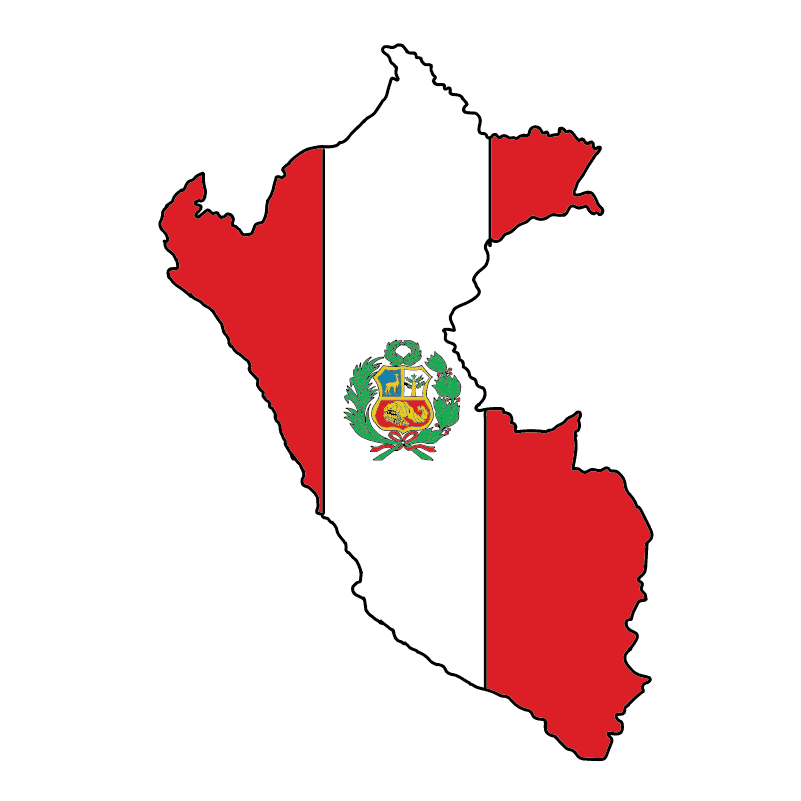The history and culture of the rose in Peru are fascinating and offer a glimpse into the country’s rich heritage. Roses have been a significant part of Peruvian culture for centuries. These beautiful flowers have been used in various ways, from religious ceremonies to medicinal treatments.
Peruvians have been cultivating roses for centuries, and the country is now one of the world’s leading producers of roses. Roses are grown in various regions of the country, including the provinces of Huaraz and Carhuaz in Ancash. The cultivation of roses has been expanding in areas irrigated by glacier meltwater. Consequently, it has become an essential economic activity for many Peruvian farmers.
The significance of roses in Peruvian culture goes beyond their economic value. Roses have been used in religious ceremonies, and their symbolism has played an important role in various rituals and traditions. For instance, the national flower of Peru is the Cantua Buxifolia, which is often used in traditional Andean ceremonies. Understanding the history and culture of the rose in Peru can offer valuable insights into the country’s traditions and customs.
Historical Roots
Roses have a long and rich history in Peru, dating back to pre-Columbian times. The ancient Peruvians were excellent horticulturists and cultivated many types of plants, including roses. They used roses for medicinal purposes, as well as for religious and decorative purposes.
During the Inca Empire, people highly valued roses and often used them in religious ceremonies. The Incas believed that roses had healing powers and used them to treat various ailments. They also used roses to create beautiful garlands and wreaths, which were worn by the nobility and used to decorate temples and other important buildings.
When the Spanish arrived in Peru in the 16th century, they brought with them new varieties of roses from Europe. These roses were highly prized and were grown in the gardens of the wealthy Spanish colonizers. Over time, the Peruvians began to cultivate these new varieties of roses and developed their unique strains.
Today, roses are an important part of Peruvian culture and are grown throughout the country. They are used in a variety of ways, including for medicinal purposes, as well as for religious and decorative purposes. The Peruvian rose industry is also an important source of income for many people since the country is exporting roses all over the world.
Cultural Significance
Roses hold significant cultural importance in Peru. The country has a long history of cultivating roses, and they have a wide range of cultural uses.
One of the most significant cultural events in Peru is the annual Festival of the Virgin of the Rosary. This festival, which takes place in October, celebrates the patron saint of Lima and involves a parade of roses. In addition to the Festival of the Virgin of the Rosary, roses are also essential in traditional Peruvian medicine. People have been using rose oil to treat a variety of ailments including headaches and digestive issues.
Roses also play a role in Peruvian art and literature. The famous Peruvian poet Cesar Vallejo wrote a poem called “Summer” which explores the beauty and fragility of the flower. The rose is also a common motif in Peruvian textiles and embroidery.
Overall, roses have played an important role in Peruvian culture for centuries. They are a symbol of beauty, love, and spirituality, and are deeply ingrained in the country’s traditions and customs.
Economic Impact
The cultivation of roses has been expanding in areas irrigated by glacier meltwater, including the provinces of Huaraz and Carhuaz in Ancash, where a number of the high peaks of the Cordillera Blanca are located. This expansion has created a significant economic impact in the region.
According to a report by Columbia University, rose cultivation has provided a source of income for many Peruvian mountain farmers. The report states that the loss of Mother’s Day sales in 2020 due to the pandemic had a severe impact on rose farmers in the region. However, the minority of farmers who were able to benefit from government subsidies and financial assistance were able to continue their operations during the pandemic.
The rise of the rose industry in Peru has also led to the creation of jobs in the region. Many farmers have been able to hire workers to help with the cultivation, harvesting, and packaging of the roses. The industry has also created jobs in transportation and logistics, with the country shipping roses to markets both domestically and internationally.
The economic impact of the rose industry has not been limited to the mountain regions of Peru. The industry has also led to the development of new technologies and innovations in the country. For example, the use of hydroponic systems for rose cultivation allowed for year-round production of roses in the country.
Overall, the rose industry in Peru has had a positive economic impact on the country, particularly in the mountain regions where it has provided a source of income and employment for many farmers and workers.
Artistic & Literary Influence
Roses have had a significant influence on Peruvian art and literature. Peruvian literature has its roots in the oral traditions of pre-Colombian Los Comentarios Reales de los Incas, published in 1609. After independence, Costumbrism and Romanticism became the most common literary genres, as exemplified in the works of Ricardo Palma. The rose has been a recurring symbol in Peruvian literature, often representing love, passion, and beauty. For instance, in Palma’s “Peruvian Traditions,” the rose symbolizes the passion between two lovers. Similarly, in Cesar Vallejo’s “The Black Heralds,” the rose is a symbol of beauty and hope.
In Peruvian art, roses have been used as a motif for centuries. The earliest artwork in Peru came from the Cupisnique culture, which was concentrated on the Pacific coast. Additionally, some of these works came from the Chavín culture, which was largely north of Lima between the Andean mountain ranges of the Cordillera Negra and the Cordillera Blanca. Decorative work from this era, approximately the 9th century BCE, was symbolic and religious. Pottery and textiles often have rose motifs to symbolize beauty, love, and passion.
During the colonial period, European art styles heavily influenced Peruvian art. Roses remained a popular motif in Peruvian art during this period, often appearing in religious paintings and sculptures. For example, the “Virgin of the Rosary” painting by Diego Quispe Tito, a renowned Cusco School painter, features a prominent rose in the foreground.
In modern times, Peruvian artists have continued to use roses in their work. For instance, the contemporary Peruvian artist, Elena Damiani, has created a series of works that explore the relationship between nature and culture. In some of her works, she uses roses to represent the beauty and fragility of nature.
Overall, the rose has played a significant role in Peruvian art and literature, serving as a symbol of love, passion, beauty, and hope. Its influence is evident in the works of many Peruvian artists and writers throughout history.
Roses In Peru
Peru is a country famous for its diverse flora, and roses are no exception. The country boasts a wide variety of rose species that are popular both locally and internationally. Here are some of the most well-known rose varieties in Peru:
- Freedom Rose: This rose is one of the most popular varieties in Peru, growing in large quantities for export. The Freedom Rose is a hybrid tea rose with large, deep red blooms that have a long vase life.
- Classy Rose: The Classy Rose is a hybrid tea rose that is popular in Peru. It has large, white blooms and a strong fragrance.
- Inca Rose: The Inca Rose is a unique variety that is native to Peru. It has small, delicate pink flowers that grow in clusters and a sweet fragrance. Traditional Peruvian floral arrangements often make use of this variety.
- Black Baccara Rose: This rose is a hybrid tea variety that has deep, dark red blooms that almost appear black. It is a popular choice for romantic occasions, bouquets, and floral arrangements.
- Grand Gala Rose: The Grand Gala Rose is a hybrid tea variety that has large, bright yellow blooms. It is a popular choice for summer weddings and other outdoor events.
- Sonia Rose: The Sonia Rose is a hybrid tea variety that has large, pink blooms with a strong fragrance. It is also a prominent choice for floral arrangements and bouquets for special occasions.
Peru’s diverse climate and geography make it an ideal location for growing a wide variety of roses. The country’s rose industry is a significant contributor to its economy and employs many people in rural areas.
Conclusion
In conclusion, the history and culture of roses in Peru are deeply intertwined with the country’s rich cultural heritage. The country’s diverse geography and climate have contributed to the growth of a wide variety of roses, each with its unique characteristics and symbolism.
Roses have played an important role in Peruvian culture, from their use in traditional medicinal practices to their presence in the country’s literature, music, and art. The rose has been a symbol of love and beauty in Peru for centuries, and it continues to be a popular gift for special occasions such as weddings and anniversaries.
Peru’s rose industry has also become an important part of the country’s economy, with exports of roses to international markets generating significant revenue. The country’s rose growers have worked hard to develop new varieties of roses that are resistant to disease and pests, and that can thrive in Peru’s challenging growing conditions.
Overall, the history and culture of roses in Peru are a testament to the country’s rich cultural heritage and its commitment to innovation and growth. Whether used for medicinal purposes, as a symbol of love and beauty, or as a source of economic prosperity, the rose continues to play an important role in Peruvian society.
Roses Originating In Peru
The Rose Directory website library catalogues roses from around the world. If there are any roses originating from this country, you can find a clickable list to explore below. If there are no roses listed, don’t worry – we will continue to add more roses to the catalogue in the future and more may appear then.
No roses found.
EXCLUSIVE Peru COLLECTION
Visit Store
From Clothes & Apparel To Home Décor & Accessories. Free Returns. Unique Designs. Worldwide Shipping.
